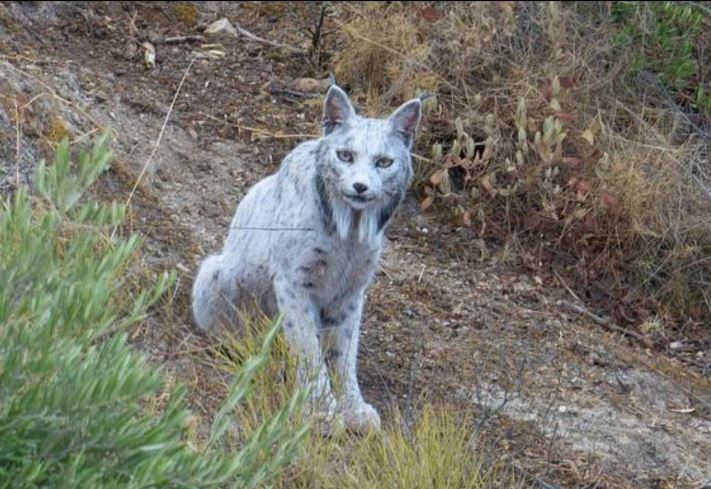In an extraordinary wildlife discovery, Spanish nature photographer Ángel Hidalgo has captured footage of what is believed to be the world’s first white Iberian lynx. The rare feline was spotted in the rugged mountains of Jaén, southern Spain, a stronghold for one of the most endangered wild cats in the world. Its pale cream coat, contrasting dark ear tufts, and characteristic facial ruff make it instantly recognisable as a lynx.
Photographer Calls Sighting ‘Truly Unique’
Experts have confirmed that the lynx is not albino but leucistic, a rare genetic condition that causes partial loss of pigmentation while keeping eye color normal. “I’ve been setting up cameras for years, with many failed attempts and long hours of work,” Hidalgo said. “But this time, nature gave me something truly unique.”
The Iberian lynx (Lynx pardinus) is smaller and lighter than its Eurasian relative, with long legs, a short black-tipped tail, and a tawny coat marked with dark spots. The discovery of a leucistic individual is remarkable, offering both a striking visual and a glimpse into the species’ growing genetic diversity.
Once on the brink of extinction, with only two isolated breeding populations surviving in 2002, the Iberian lynx has made an impressive recovery thanks to intensive conservation measures including captive breeding, habitat restoration, and prey recovery programs. By 2015, around 400 adult lynxes were counted, and by 2025, the population had risen to approximately 2,000.
Rare White Lynx Stirs Viral Buzz
To protect the lynx from potential threats, the exact location of the sighting has been kept secret. The video has already gone viral, sparking excitement among locals and wildlife enthusiasts. In Andalusia, legends of “ghost cats” spectral white lynxes roaming hillsides have circulated for generations, and Hidalgo’s footage may now have brought these myths to life.
While the pale coat is visually stunning, conservationists note it may pose survival challenges, including reduced camouflage for hunting and avoiding predators. Nevertheless, the appearance of this leucistic lynx is a positive indicator of the species’ recovery, reflecting decades of successful conservation work.
“This discovery highlights how much we still have to learn about these amazing animals,” said a wildlife expert. “Seeing something so unique underscores the importance of the conservation efforts that have helped the Iberian lynx survive and thrive.”


